How to customize the WooCommerce quantity input with no code

Did you know that you can increase your average order value by customizing the WooCommerce quantity input? A custom quantity selector lets you change details such as the default quantity, minimum and maximum quantities, and change how it it displayed. Keep reading for the complete guide of taking control of the quantity input in WooCommerce.
By default, WooCommerce allows you, or rather your customers, to change the quantities of items they're considering to buy in a fairly basic way. They can either type in a number by hand or go up and down using those small arrows.
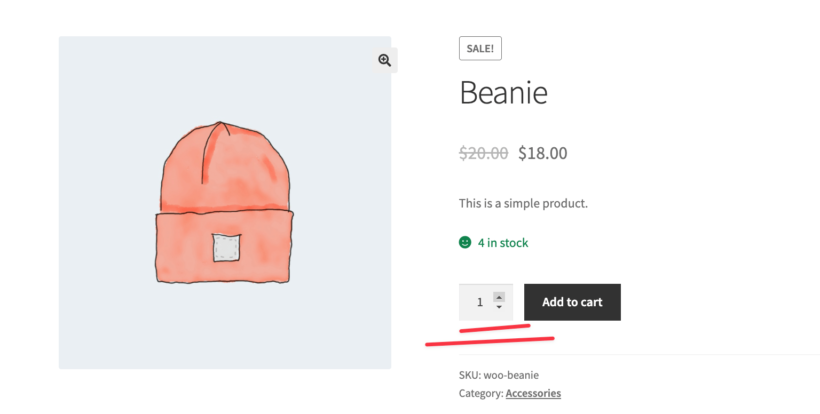
The only thing WooCommerce does to make sure those values are correct is that it compares them against the set inventory for a given product. This is fine.
However, "fine" is probably the most we can give it.
For slightly more advanced business models or types of products, you might need access to more granular settings for product quantities, their increments, or even the allowed min and max values.
In this guide, we'll show you how to get full control of your site's WooCommerce quantity input settings. We're going to achieve this with the help of the WooCommerce Quantity Manager plugin, which was built to serve this very purpose.
Different ways to customize WooCommerce quantity input
There's an almost endless range of customizations you could perform when it comes to product quantities. However, we're going to focus on what we think are the most useful ones. Plus, they won't require any custom coding. Read on, or watch this video we made to see how the plugin works.
Change the default product quantity
The inability to change the default quantities might not be a problem per se, but it's certainly a lost opportunity. Setting the default quantity to anything higher than one has the potential to increase your revenue in a straightforward way.
Here's when setting a different default quantity makes sense:
- In wholesale scenarios. For example, making the default quantity 10 can be easier to grasp than the alternative of naming the product something like "10-pack of X" and then hoping that the customer hasn't missed this detail when ordering the product.
- In scenarios where you'd prefer to sell packs of items rather than single items. This works well for commodities or other products that people run out of regularly. For example, it's more convenient for someone to buy, say, five packs of coffee right away vs just one.
Stock WooCommerce doesn't allow you to set custom default quantities for products - that number is always 1. To get this feature, you can use the aforementioned WooCommerce Quantity Manager plugin.
The plugin lets you set whatever number you wish to serve as the default quantity. Apart from that, you can set those default quantities globally (for the entire store), per product category, as well as per individual products and product variations.
For the customer, the look of the product page doesn't change. All that's different is the number next to the Add to cart button.

Set quantity minimums/maximums
The manner in which WooCommerce keeps an eye on the product quantities that your customers are adding to cart is by making sure that those quantities are more than one and less than whatever you have in stock. This, again, is "fine" for most applications, but not always.
Not being able to set the min/max quantities can be problematic when dealing with products where you can't or don't want to sell just a single unit. This can be a matter of manufacturing costs, minimum order value required, etc.
Then, on the other end of the spectrum, it's not hard to imagine scenarios where you can't sell or ship products in quantities higher than a certain number in a single order.
The WooCommerce Quantity Manager plugin can help you with this as well by letting you set up a whole range of customized rules that analyze the allowed product quantities globally, per category, per product, or per product variation.
Here's an example: say you're selling t-shirts, but you don't want to allow customers to buy less than five in a single order. At the same time, you don't care if they buy the same t-shirt five times or five different t-shirts, one of each. You can set a rule that governs this in WooCommerce Quantity Manager quite easily.

💪 Power move; you can set not only min/max product quantities but also min/max order value based on similar logic of rules.
Add quantity increments
By default, WooCommerce doesn't deliver any options for setting custom quantity increments. Customers simply by in any increment of 1.
Or, more accurately, such a thing is only available if you're ready to write custom code and add it to your theme's functions.php file.
Instead, WooCommerce Quantity Manager lets you set custom increments per category, product, product variation, or globally.
This can work well for products that come in packs of X from the manufacturer, and repacking them to match each order's quantity would be too time-consuming. Think of pens, hats, etc.
Setting default increments solves this issue and forces the customer to buy a given product in multiples of X.
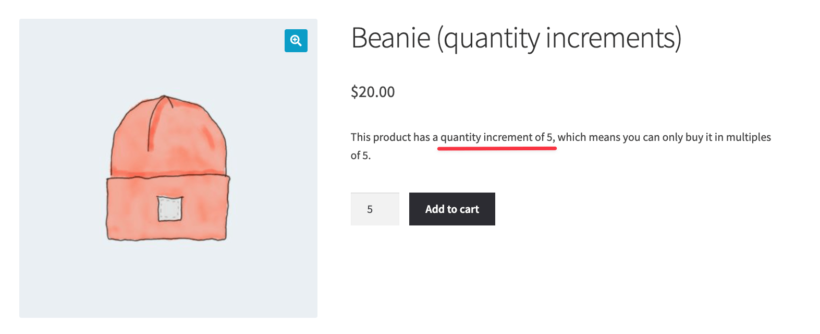
Allow different quantities per user role
Being able to set different WooCommerce quantity input options per user role is a great way of making your store usable for both your retail and wholesale customers.
For example, you can allow retail customers to buy just a single item of any given product. For wholesalers, however, you can make that number 5, 10, or whatever you wish.
You can set similar rules for min/max order value, and default product quantities.
Show quantity input on your main shop page
There are different ways in which you can organize the main shop page of your store. By default, that shop page is a grid view of your product catalog, with images and add to cart buttons for each product:
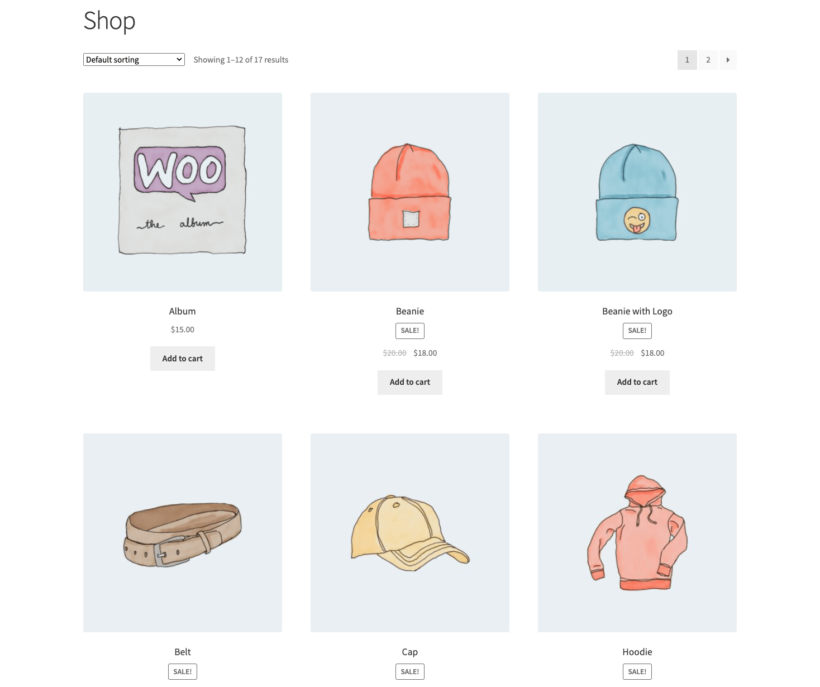
But this is not the only way to handle things.
Display your product catalog in table view - with fields for quantity input
The table view is a great way to transform your standard shop page into an order form where the customer can add products to cart in bulk, and also set custom quantities of those products at the same time.
The WooCommerce Product Table plugin allows you to do that. Here's an example of what that final order form can look like:
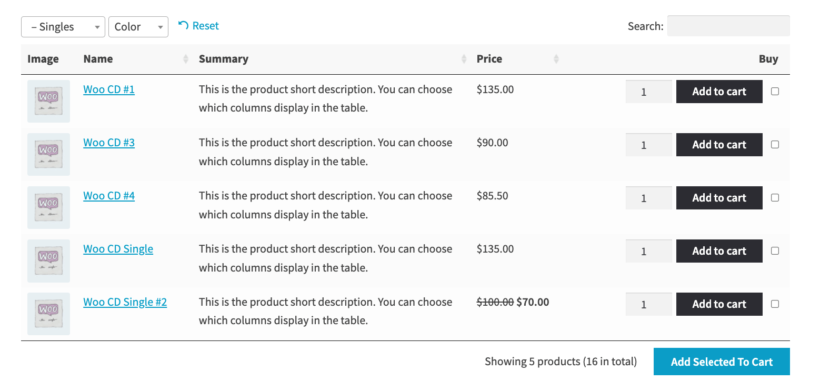
💪 Power move; you can use this plugin together with WooCommerce Quantity Manager to set min/max quantities for each product, quantity increments, and other details that we described above.
👉 Learn more about the WooCommerce Product Table plugin here.
Add quick view buttons to your product page - with fields for quantity input
If converting your whole shop page into an order form sounds like too extreme of a solution, then how about letting people customize product quantities inside pop-up lightboxes.
The idea is simple - whenever a customer clicks on a product listing, instead of being redirected to that product's page, a lightbox appears containing all the key details about the product. Quantity inputs can be among those key details.
This can be done with the WooCommerce Quick View Pro plugin. Here's a demo of what the final result can look like:
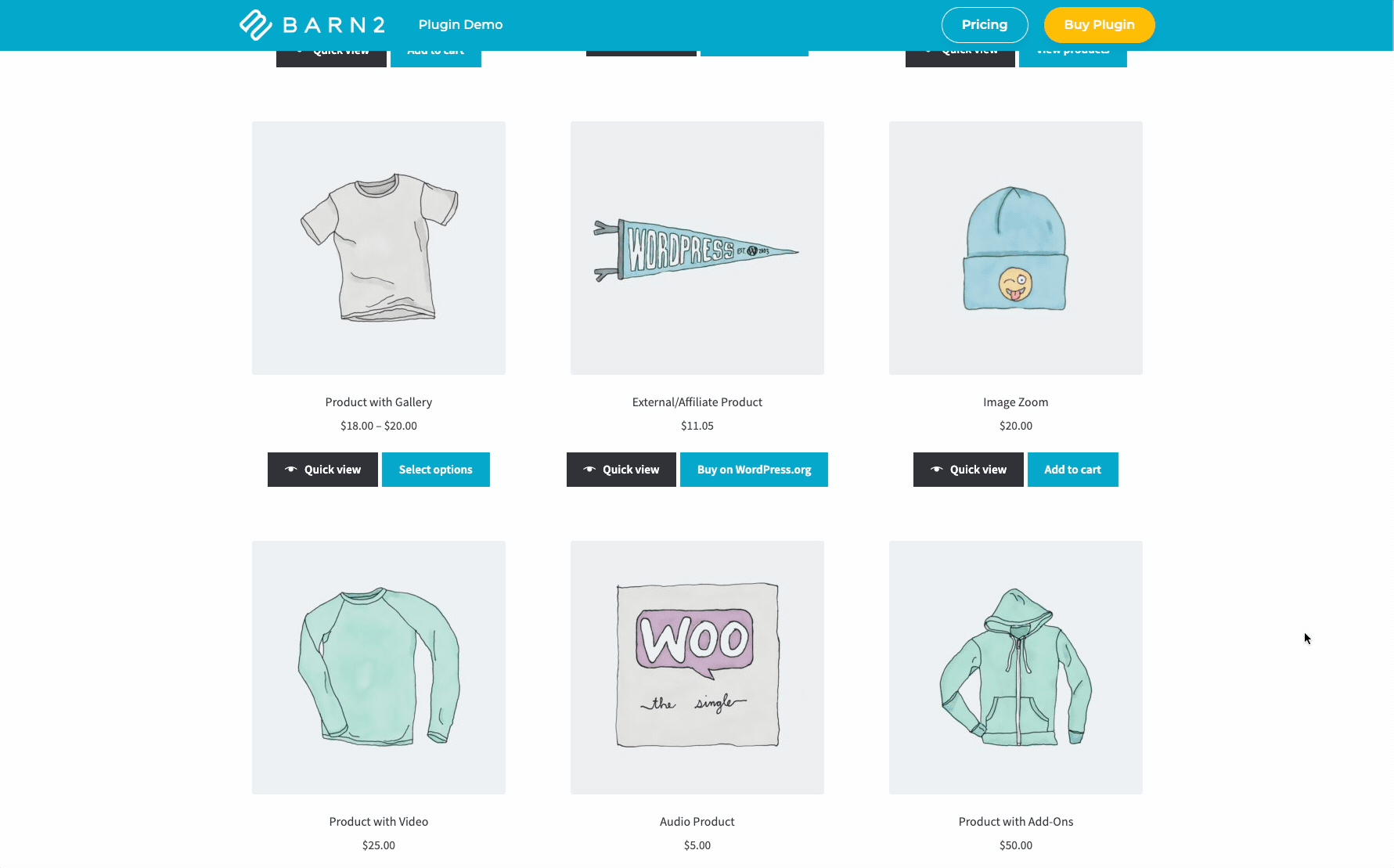
This allows the customer to set the quantity without having to visit single product pages.
👉 Learn more about the WooCommerce Quick View Pro plugin here.
Create a bulk order form with a separate quantity box for each variation
ℹ️ This is a fairly niche concept, but if you run the right kind of store, this can be golden.
Let me just show you an example screenshot of what something like this can look like, and then I'll explain the details:

What you see here is a large order form that gathers all available variations of a given product, along with quantity inputs for each variation.
This can be invaluable in wholesale scenarios where your customers might want to buy different quantities of different variations in a clear and easy to comprehend way. Albeit this might look like a complex thing at first, it's actually much easier to grasp than the alternative of working your way through each variation individually and adding them to cart one by one.
How to build something like this? Check out the WooCommerce Bulk Variations plugin.
Add plus and minus buttons for product quantities
Plus and minus buttons provide your customers with a quick way to change product quantities in a couple of clicks. This can be an overall safer approach that saves your customers from making typos when entering quantities by hand.
Here's a demo of what those plus and minus buttons can look like on a restaurant website:

This is done with the help of our WooCommerce Restaurant Ordering plugin. Albeit the name seems to put it in a certain drawer, it can very well be used on any type of ecommerce store, not just for taking food orders. Replace pizza with t-shirts or business cards, and it works just as well.
The plugin displays your products as an order form with plus buttons next to them. Clicking those buttons either adds the product to cart right away or displays a lightbox for product customization/selecting variations if there are any (this is the pizza example you can see above).
Create a custom WooCommerce quantity input with unlimited options
As you can see, there are multiple options available for anyone looking for ways to customize the native WooCommerce quantity input. By installing WooCommerce Quantity Manager, you take complete control over the quantity input in your store - without having to write or edit any code.
The real power is in setting quantity rules for product categories, individual products, or even product variations. This gives you some serious control over orders coming in and the quantities that your customers can buy.
It's also an opportunity to increase your revenue without spending any additional funds on product marketing. Instead, you're achieving it with some good in-store optimizations.
Check out what else can be done with WooCommerce Quantity Manager and how you can use it in your store effectively.